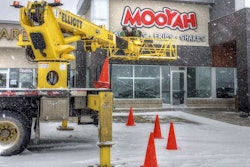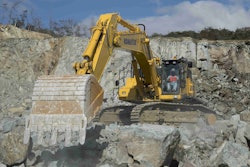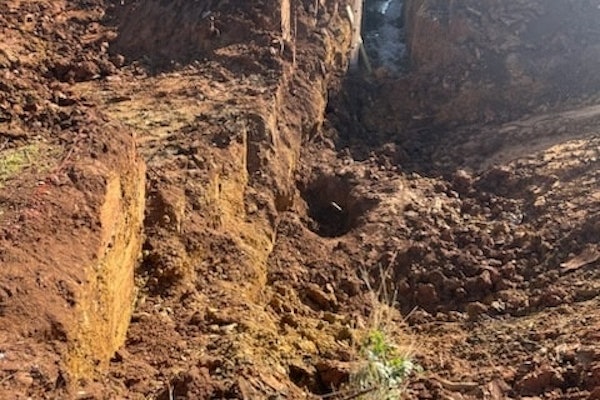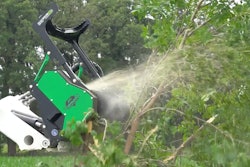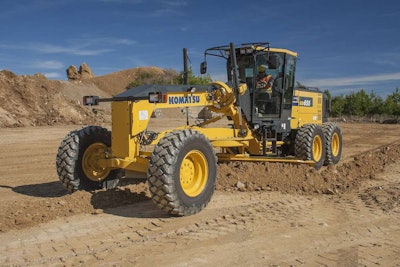
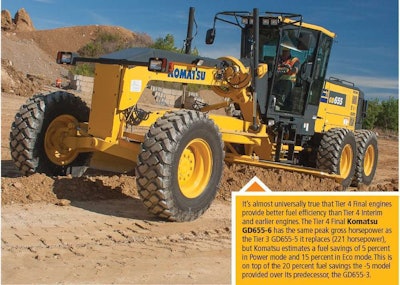
Some machines are exciting because of the array of features, applications and attachments they support. Motor graders…not so much. They do one thing. They move dirt. So, how do OEMs build excitement for these one-dimensional machines? By making them better at doing that one thing.
Proper power
As with other types of equipment, graders have seen a steady rise in power. Unlike some other categories, this rise has been significant. Luke Kurth, grader product marketing manager with John Deere, says graders have seen the fastest power growth rate of any type of equipment, up some 40 percent in the past 15 years for Deere products. “Power is a key consideration because graders are drawbar machines.”
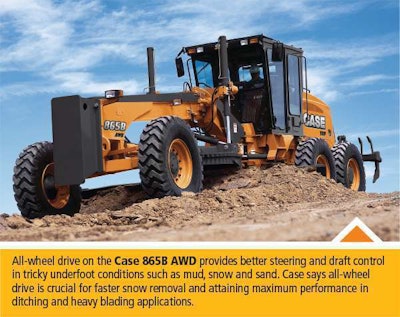
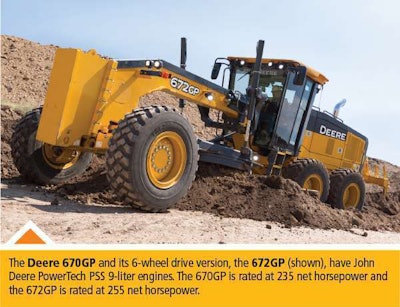
But these power increases are more than what’s required to merely compensate for Tier 4 Final, and customers are finding these new, more powerful machines can do tasks their predecessors could not. “Customers are doing more rough-in with their graders now,” says Kurth, “where they used to bring in dozers for all but the final grading.”
The way power is used is just as important as the power itself. Front-wheel drive is one way to apply power more effectively. (Note that there is no standard term for this. It’s front-wheel drive, all-wheel drive, 6-wheel drive, even front-wheel assist, depending on the manufacturer.) Power can be apportioned front-to-rear to suit conditions. For fine grading, drive can be front-wheel only and at very slow speeds. Front-wheel- only Precision Mode on Deere graders allows operation from 0.25 to 5 miles per hour, with speed infinitely variable between those low and high limits.
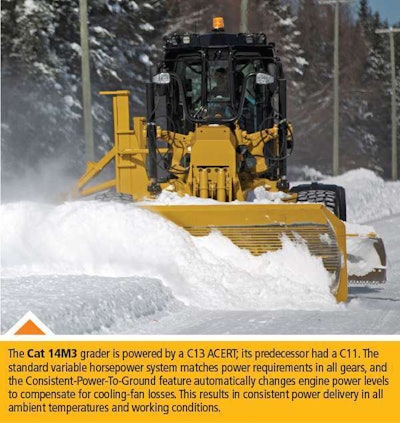
Kurth says Deere graders use event-based shifting, which results in smoother shifts and less likelihood of breaking traction. If the grader encounters an immovable object, an anti-stall feature kicks the transmission to neutral before damage to the machine can occur.
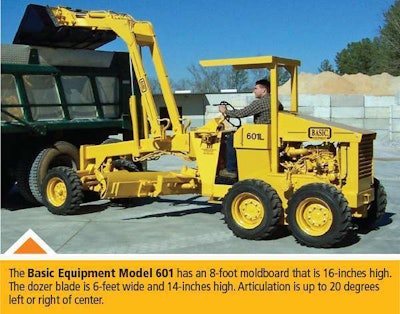
McMahon says there is a requirement for more electrical power and Komatsu has beefed up the electrical output on their GD655-6. Some of the increased electrical capacity goes to grade control systems, when the grader is so equipped. Much of it goes to DEF line heaters. Although the DEF line is purged at shut-down, it is heated in cold weather operation to ward off freezing.
Sometimes, smaller is better

Factors affecting government buying choices include a history of buying a certain size class of machine, the residual value of a grader when it’s sold into its second life to a private owner, and the need to move snow off those county roads, which requires higher speed and power. After balancing all the considerations, “We do see a small percentage of customers trying smaller models and liking the result,” Porter says.
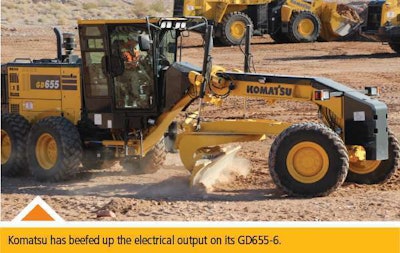
Customization
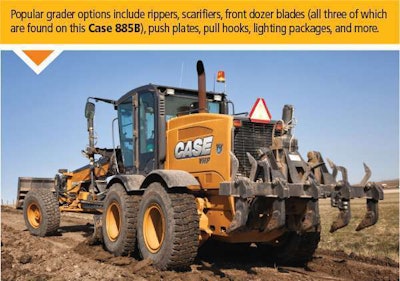
Control of options and attachments is integrated into the grader’s standard controls in most cases. “Our patented Advanced Control Joystick option gives control of Cat GRADE with Cross Slope, AccuGrade, or Snow Wing,” says Caterpillar’s Porter, “and can be configured to control auxiliary functions such as a ripper or front plow blade. All this from the joysticks.”
Chastain says although his company doesn’t emphasize their ability to customize the Model 601, they’ve done just that. A front-mounted loader is a popular option. Capacity is about 1,000 pounds and lift height is 9 feet, 6 inches. An optional quick-attach and 12 gallon-per-minute hydraulic circuit allows the use of common skid steer attachments on the front of the Model 601.
While factory-installed options are available, it’s often the dealer who’s tasked with finding solutions to customers’ needs. Basic Equipment graders are sometimes used for levee work involving extreme side slopes. Counterweights help the grader resist roll-over in these conditions. And, because the 601 is hydrostatic drive with no mechanical coupling between the engine and the drive, the company has mounted the entire engine assembly on a pivot so it remains upright on these side slopes and doesn’t starve the sump of oil.
While Berry Tractor and Equipment mostly sells Komatsu graders, they also offer Mauldin Paving equipment, including graders.
Part of Berry Tractor’s offering is the Handy Hitch Profile Packer/Roller, a pneumatic-tire unit that uses hydraulic downforce to compact soil behind the grader. For customers whose graders are spec’ed with grade control, Berry Tractor will piggyback a secondary hydraulic controller to allow electrohydraulic (EH) functionality for use with those systems, while retaining non-EH feel and control for the operator.
Jon Berry, Berry Tractor company president, says telematics use is mixed among his customers, with private contractors using it the least and governmental agencies using it the most. “Our company helps customers, even those with a single grader, to get the most from telematics, and one way to do that is to improve their service procedures,” he says.
Steve Sanders with Berry Tractor also cites the complexity of modern equipment as a key reason for customers to understand and use the capabilities of telematics. “We used to say, ‘This isn’t rocket science.’ But now it kind of is,” he says. Telematics help ensure service is done efficiently, on even the most sophisticated machines.
And the benefit of that sophistication is a more versatile machine. Beyond being able to move more dirt due to power increases, modern graders can move dirt with greater precision. “Machine guidance technology allows motor graders to go beyond flat surfaces.” says Bauer. “They can effectively work on complex slopes. This is pushing graders into more technical grading applications, such as golf courses and landscaping.”




